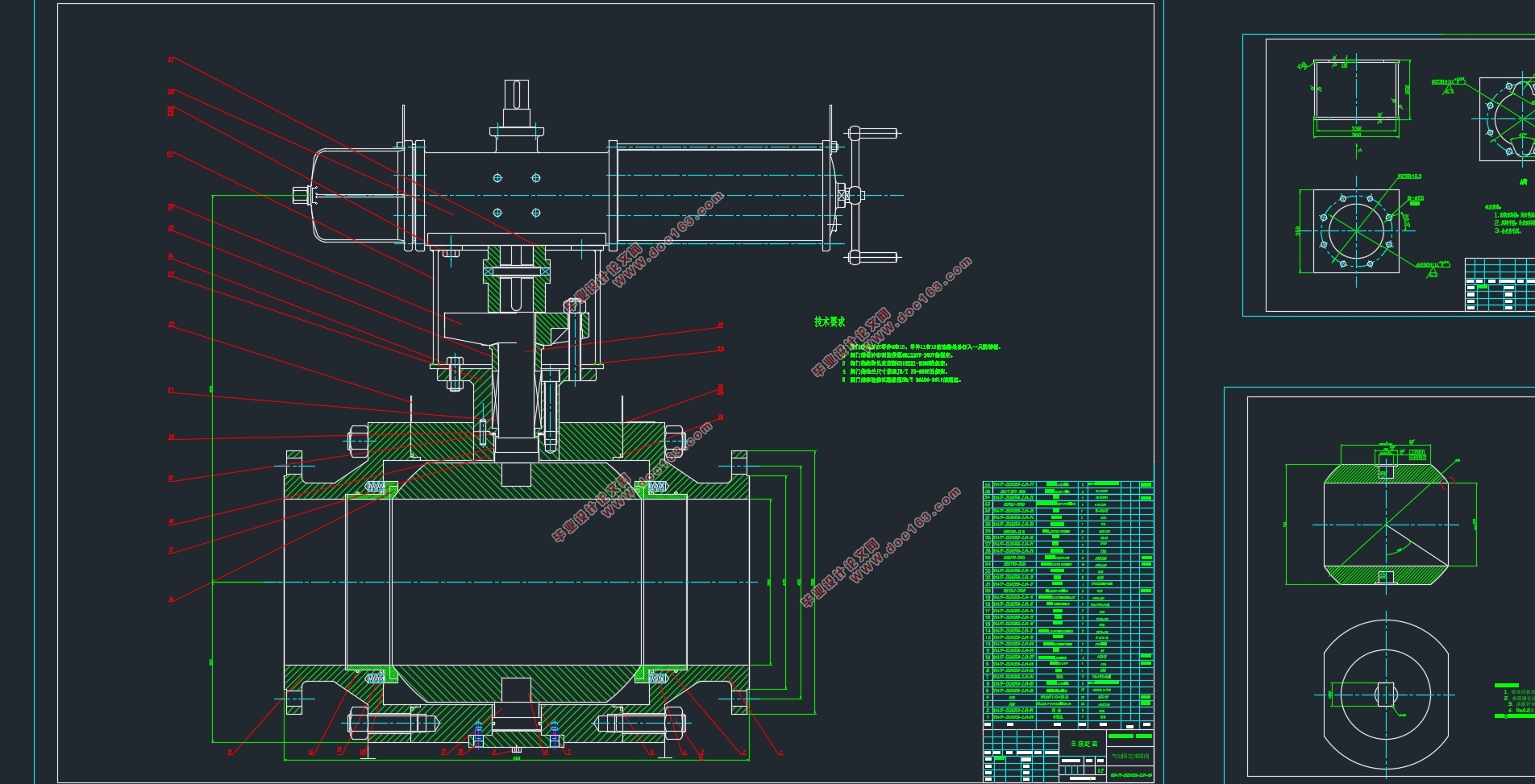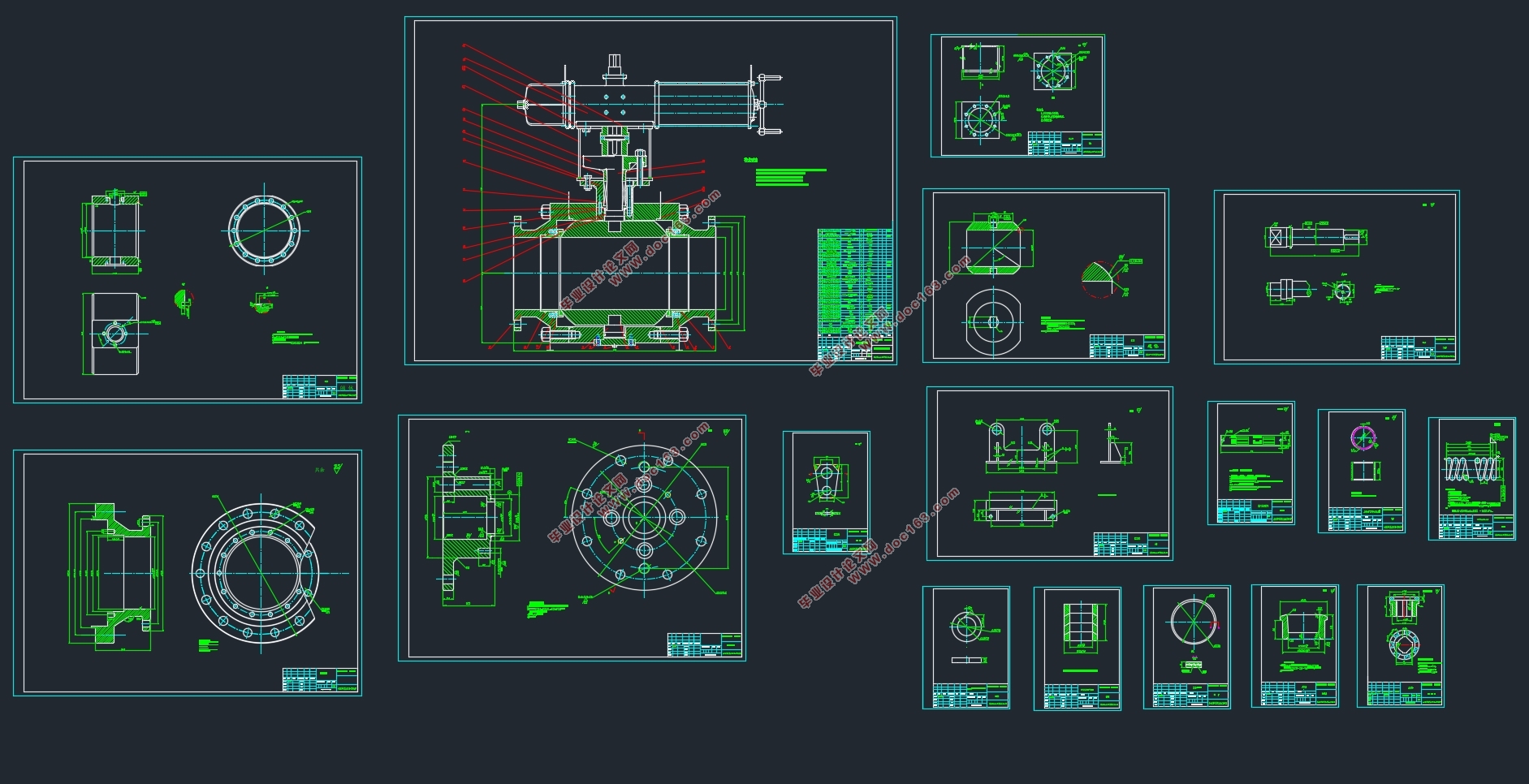气动固定球球阀设计(DN350 PN25)(含CAD零件图装配图)

1.无需注册登录,支付后按照提示操作即可获取该资料.
2.资料以网页介绍的为准,下载后不会有水印.资料仅供学习参考之用.
密 惠 保
气动固定球球阀设计(DN350 PN25)(含CAD零件图装配图)(任务书,开题报告,论文说明书8000字,CAD图16张)
摘要
本次毕业设计的内容是气动固定球球阀,主要包含球阀的发展,定义,分类,结构原理以及阀门的详细设计计算过程。阀门的设计主要分为两快,其一是阀门通用件的设计,另外就是专用件的设计。详细分析各个部件的受力情况,以达到设计要求。其中设计的主要内容是阀门密封面的计算,法兰的选用校核,阀杆的校核。
设计阀门需要先根据所要满足的工作条件,如温度,压力等,进行选材和设计结构与尺寸,按照国标和推荐尺寸初步确定零件的结构后再对零件进行受力分析,强度校核等,最后绘制阀门的工程图,写出计算说明书。
关键词: 球阀 设计 校核 密封面
Abstract
ThisThe content of this graduation design is about pneumatic fixed ball valve, mainly includes the development, definition, classification, structural principle and detailed design and calculation process of the valve. Design of Valve is mainly divided into two parts, one is the design of general parts, and the other is the design of special parts. The stress of each component is analyzed in order to meet the design requirements. The main content of the design is the calculation of sealing surface of the valve, selection of the flange, check of valve rod. [来源:http://think58.com]
Valve design, first according to the working conditions which must be met, such as temperature, pressure, etc., to select material and design the structure and size. In accordance with national standard and recommended size, the primary structure of component is confirmed. Stress analysis and intensity check are carried out after. Finally draw the engineering drawing of the valve, write the calculation specification.
Keywords: seal face Ball valve Design verification
3.1 球阀的参数等级
1、公称压力或压力级:PN1.0-32.0MPa、ANSI CLASS 150-900、JIS10-20K;
2、公称通径或口径:DN6~900、NPS 1/4 ~36;
3、连接方式:法兰连接等;
[资料来源:http://think58.com]


目录
摘要 I
Abstract II
目录 III
第一章 绪论 1
1.1 引言 1
1.2 毕业设计选题目的意义 1
1.3 国内外研究现状及发展方向 1
1.4 主要研究内容 3
第二章 固定球球阀的定义 4
第三章 球阀参数等级,主要零件材料及性能以及执行标准 6
3.1 球阀的参数等级 6
3.2 主要零件材料及性能 6
3.3执行标准 6
第四章 气动固定球阀的设计计算 8
4.1 阀体的设计与计算 8
4.2 阀体的选材 8
4.3 阀体的结构长度和连接尺寸 8
4.4 壳体壁厚SB(mm) 10
4.5 球体的设计与计算 10
4.6 阀座密封比压的计算 11
4.7 进口密封介质作用力计算 12
4.8总摩擦扭矩的计算 13
4.9中法兰螺栓强度校核 15
4.10球体的设计和校核 18
4.11阀杆的设计和校核 19
4.12阀杆材料选择 19
4.13阀杆强度的计算 20
4.14 阀杆连接件的强度计算 23
第五章 球阀使用注意事项 25
第六章 总结 26
第七章 致谢 27
参考文献: 28
